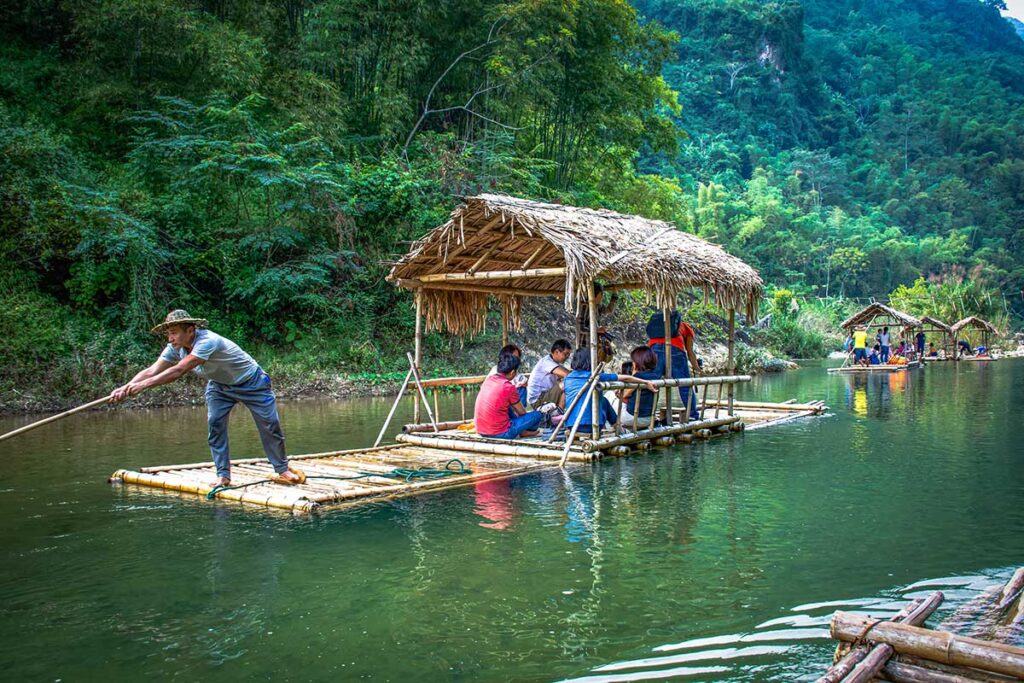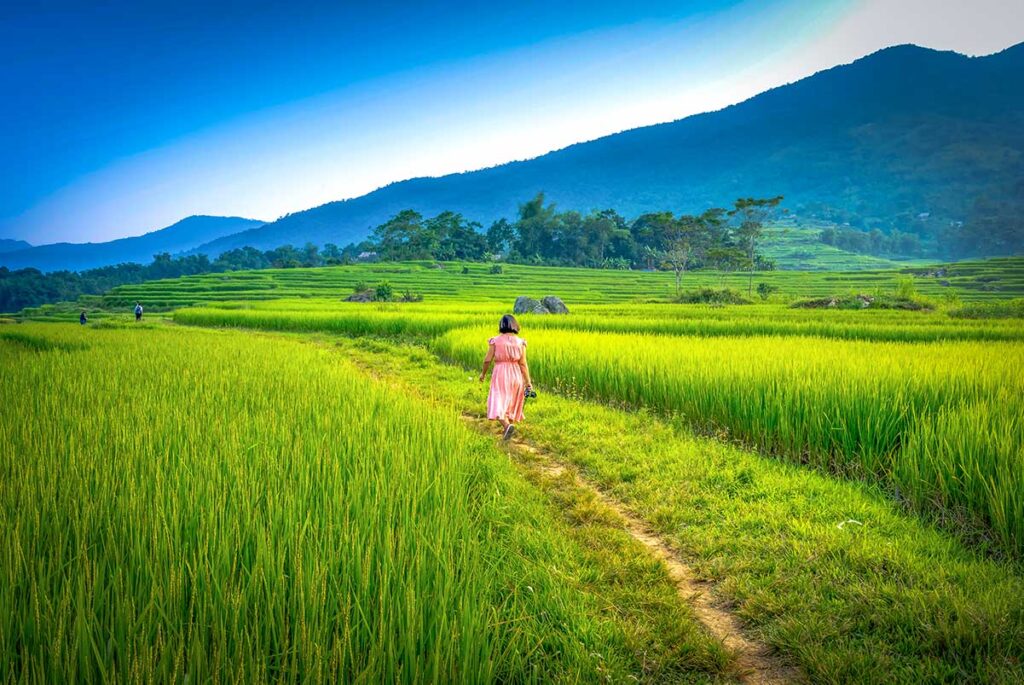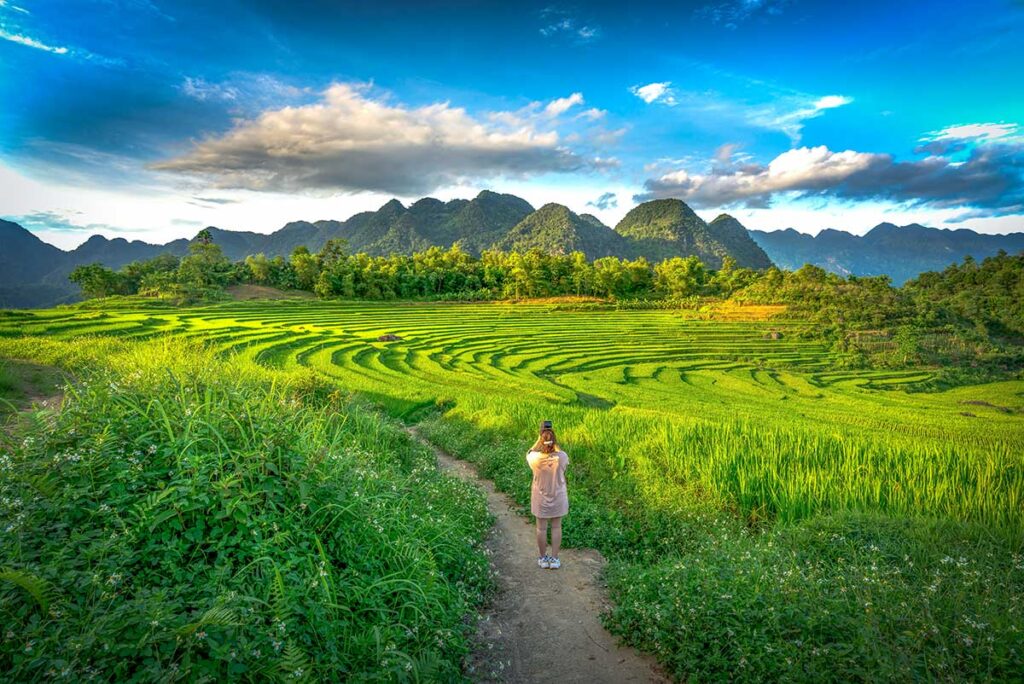About the Cham Stream in Pu Luong
What and where it is
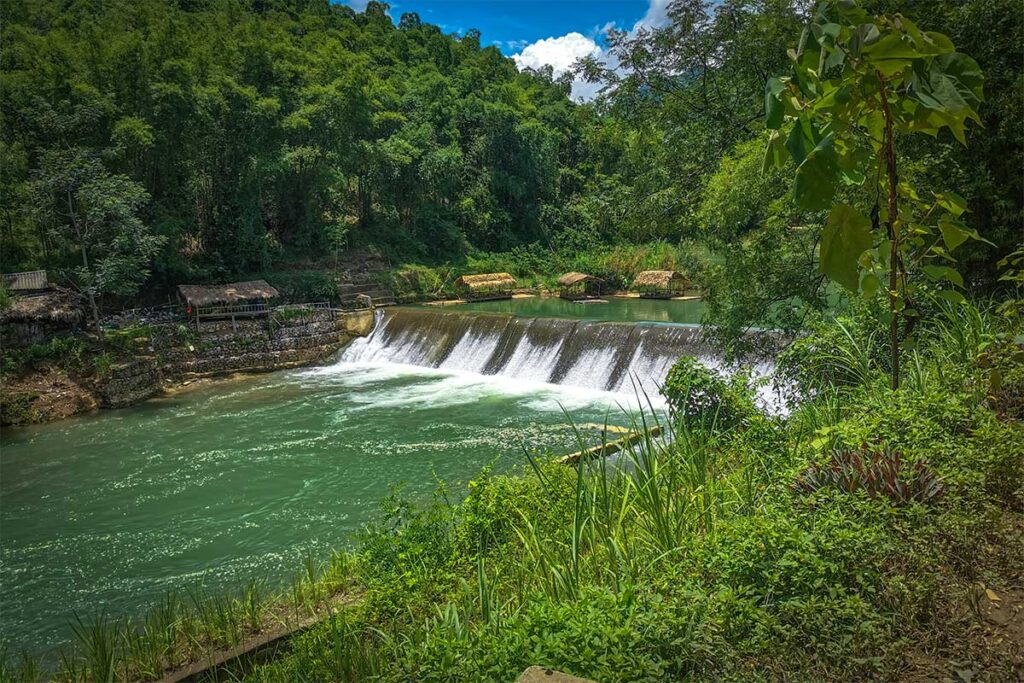
Cham Stream (Suối Chàm) is a gentle waterway running through the Pu Luong valley in Ban Cong commune, Ba Thuoc District, Thanh Hoa Province. It flows through farmland, stilt-house villages, and terraced hills before merging with the Nam Ma River. For generations, local Thai communities have used the stream for fishing, bathing, and irrigation.
Water wheels
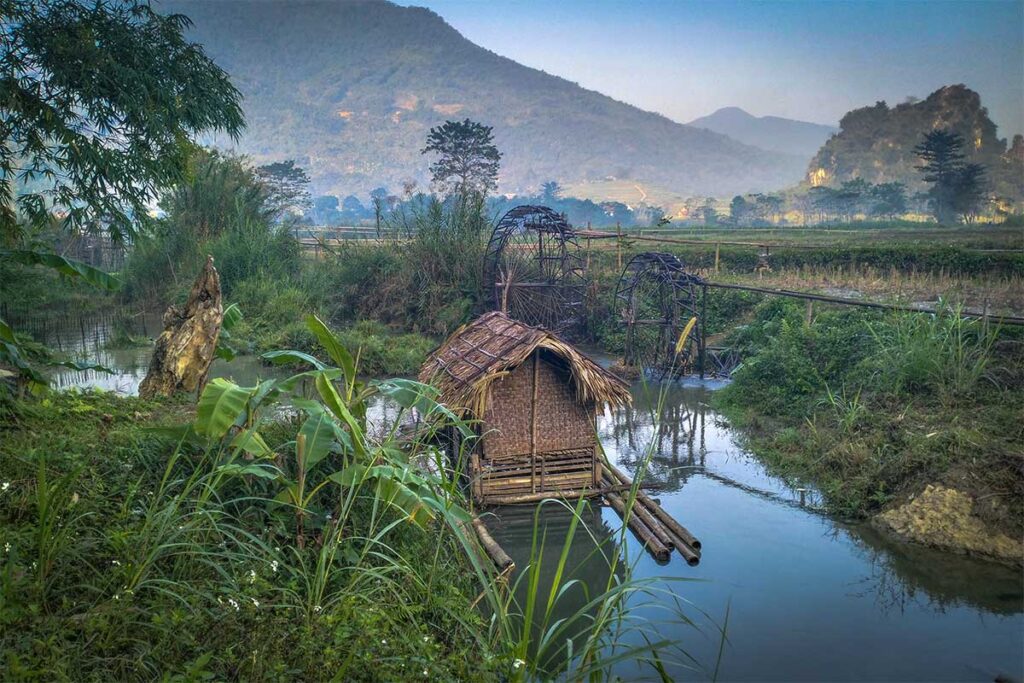
Along the Cham Stream, you’ll often spot large bamboo water wheels turning slowly in the current. These wheels are still used to lift water into bamboo aqueducts, irrigating the surrounding rice fields. They’re one of Pu Luong’s signature sights and part of the traditional farming system that gives the region its unique character.
The atmosphere
The Cham Stream flows gently through tree-lined banks and small villages, offering a quiet and laid-back setting. It’s not an untouched wilderness, but a rural working landscape where local life unfolds at a relaxed pace. The mix of nature and everyday culture is what makes it worth experiencing.
The bamboo rafting experience
What is bamboo rafting here?
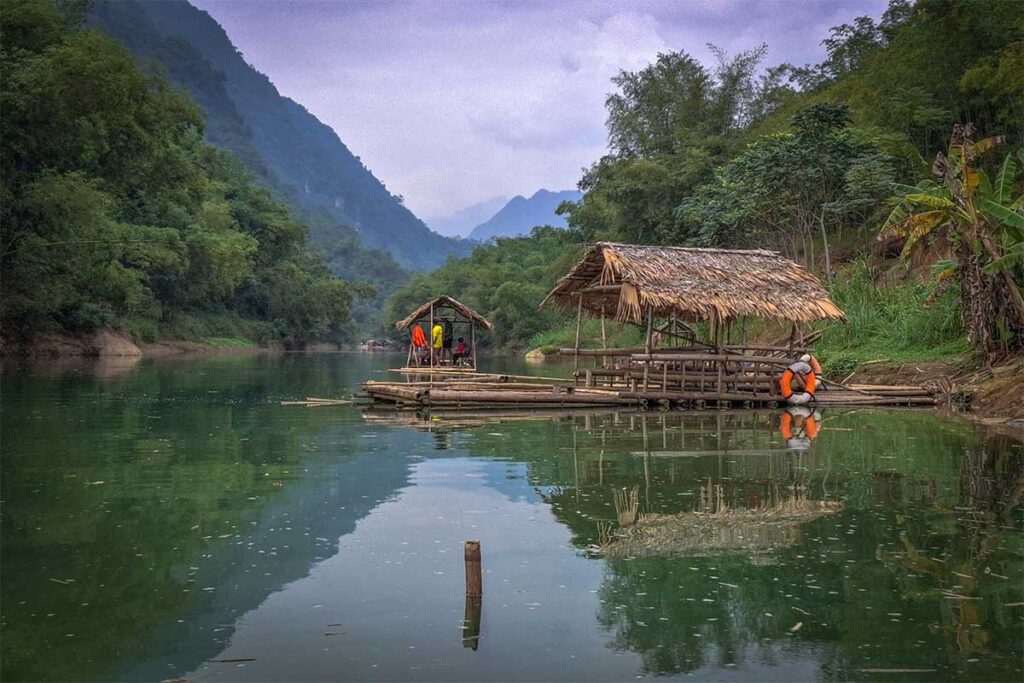
Bamboo rafting in Pu Luong isn’t about speed or adventure — it’s a slow, relaxing float down a quiet stretch of stream. You’ll sit or stand on a flat raft made from thick bamboo poles, steered by a local using a long pole. It’s a traditional method of transport now adapted for tourism, giving you a peaceful way to enjoy the scenery.
What to expect during the ride
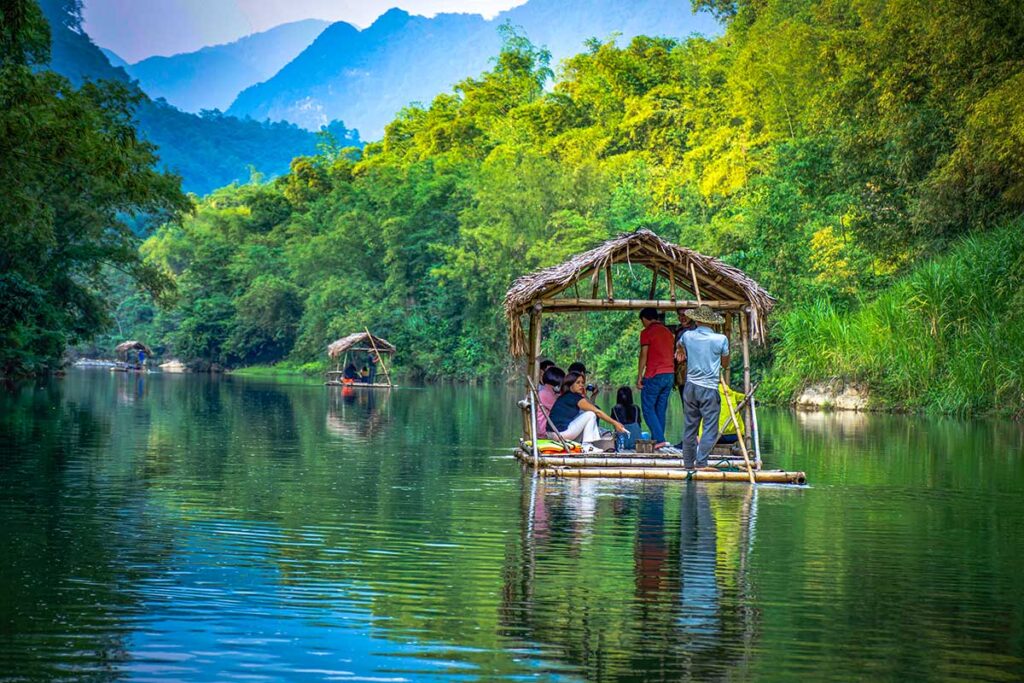

The ride usually lasts around 30 to 45 minutes, covering a short section of the stream — often just 300 to 400 meters. In some cases, the trip follows a loop. Along the way, you’ll pass bamboo water wheels, stilt houses, rice fields, and sometimes even see buffalo cooling off in the water.
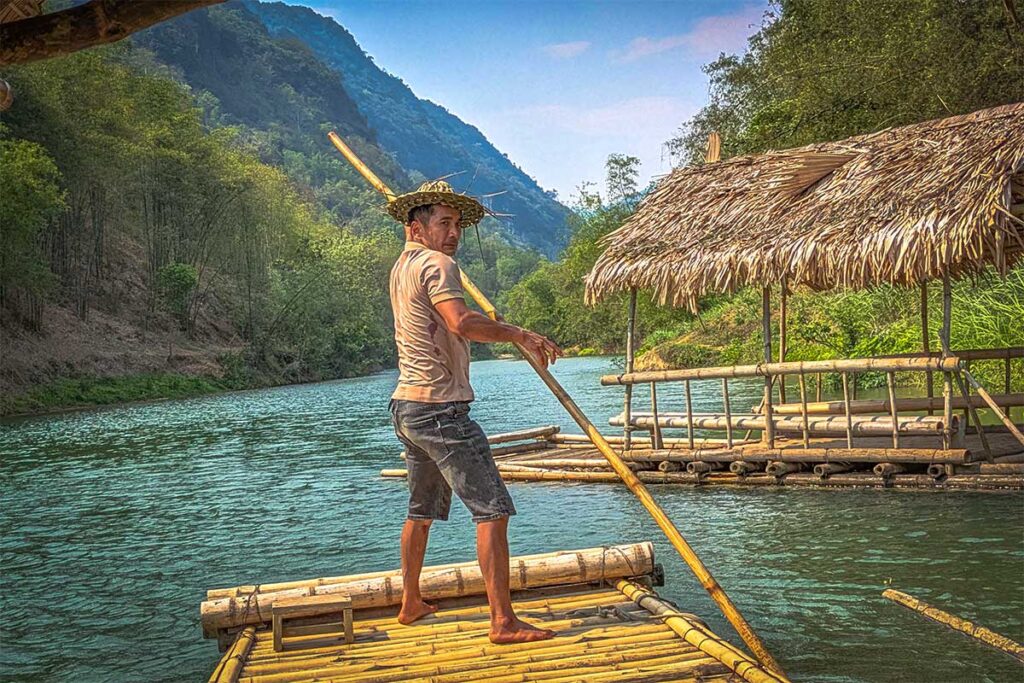
Some raft operators may let you try steering the raft yourself, though this depends on the guide. It’s also possible to add a lunch stop or quick swim, depending on your arrangement.
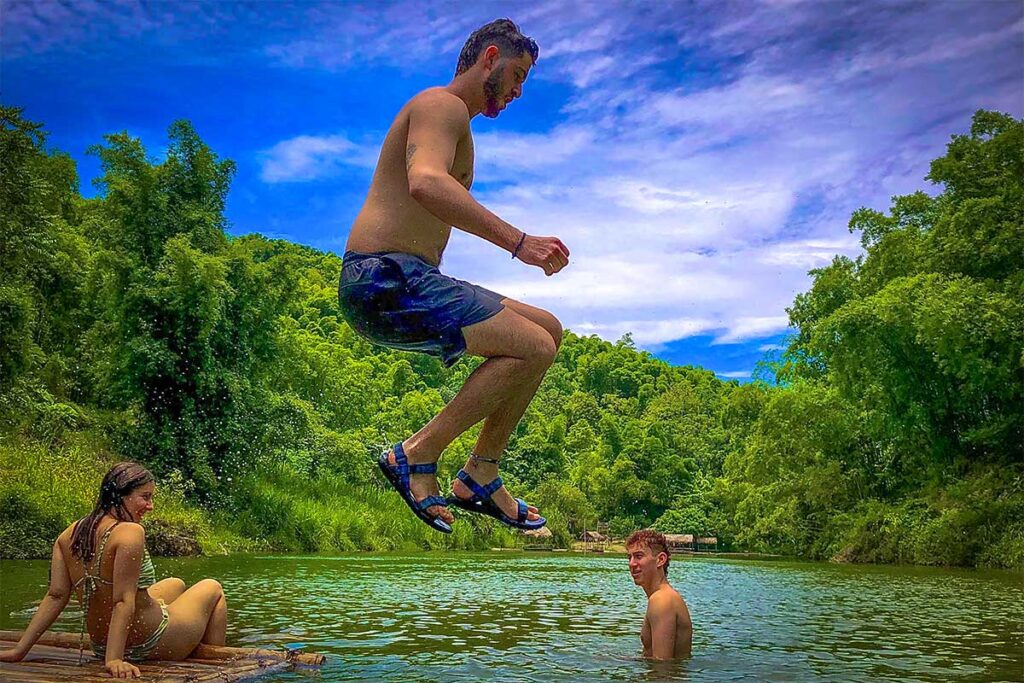
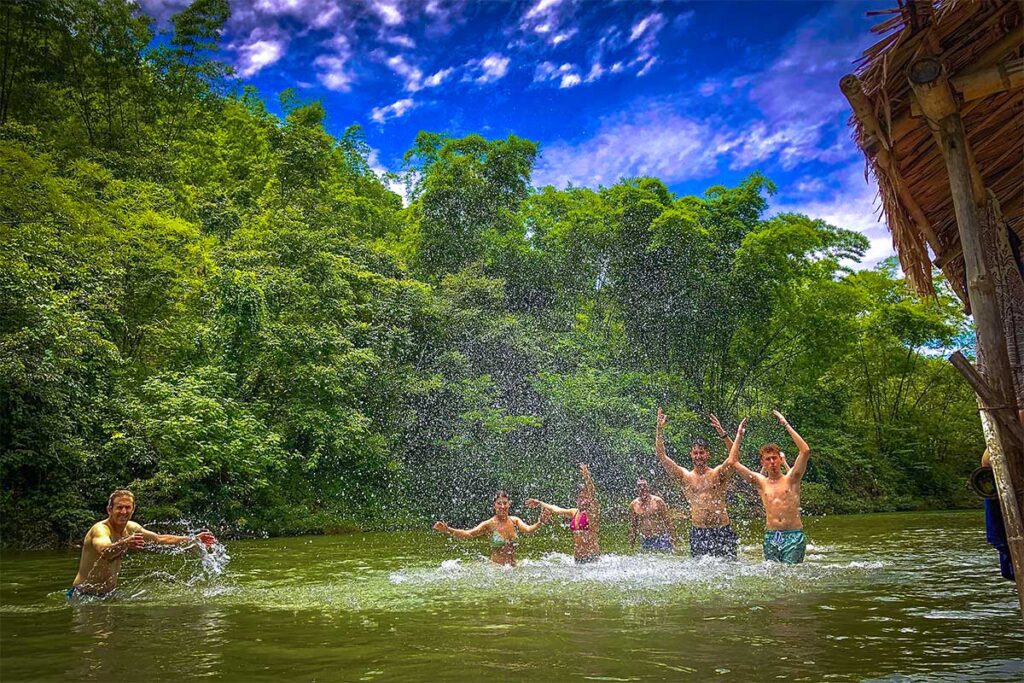
Is it worth it?
The rafting itself is simple and peaceful — not a major highlight, but a nice change of pace, especially if you’ve been trekking. It’s a good fit for anyone looking for a relaxed activity that doesn’t require much effort. Just don’t expect dramatic landscapes or an adventurous ride — it’s more about drifting quietly through a rural setting.
Where it is and How to arrange it
Location and getting there
The bamboo rafting area is located in Chieng Lau hamlet and marked on Google Maps as Bè Tre Suối Chàm. It’s easy to reach by motorbike or scooter — Pu Luong has only a few main roads, so navigation isn’t difficult.
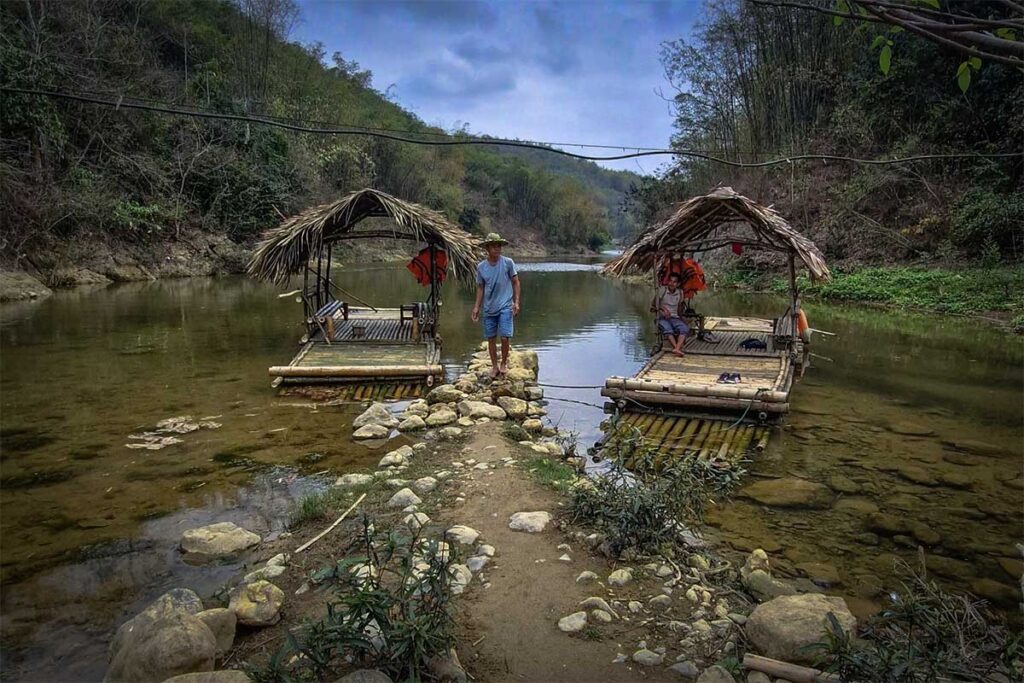
If you don’t drive, some lodges can help arrange transport, but options are limited. Private cars with drivers are rarely available within Pu Luong itself and usually need to be arranged in advance from Hanoi. Bamboo rafting is also sometimes included in multi-activity tours that combine trekking, village visits, and local sights like Hieu Waterfall.
You can check our tours that include transfers from Hanoi, trekking in Pu Luong and a ride on a bamboo raft on the Cham Stream:
How to book it
You don’t need to book in advance — the rafting is run by locals directly at the stream. Just show up and someone will usually be available to take you out. There’s no official ticket booth or reception desk. If you’re unsure, ask your accommodation to call ahead and check availability.
Prices
Expect to pay around 50,000 to 80,000 VND per person for a basic ride. Prices aren’t posted, and there’s no fixed rate — it’s an informal service, sometimes negotiable depending on group size or add-ons like lunch. If you’ve booked a tour that includes bamboo rafting, double-check whether it’s included or offered as an optional extra.
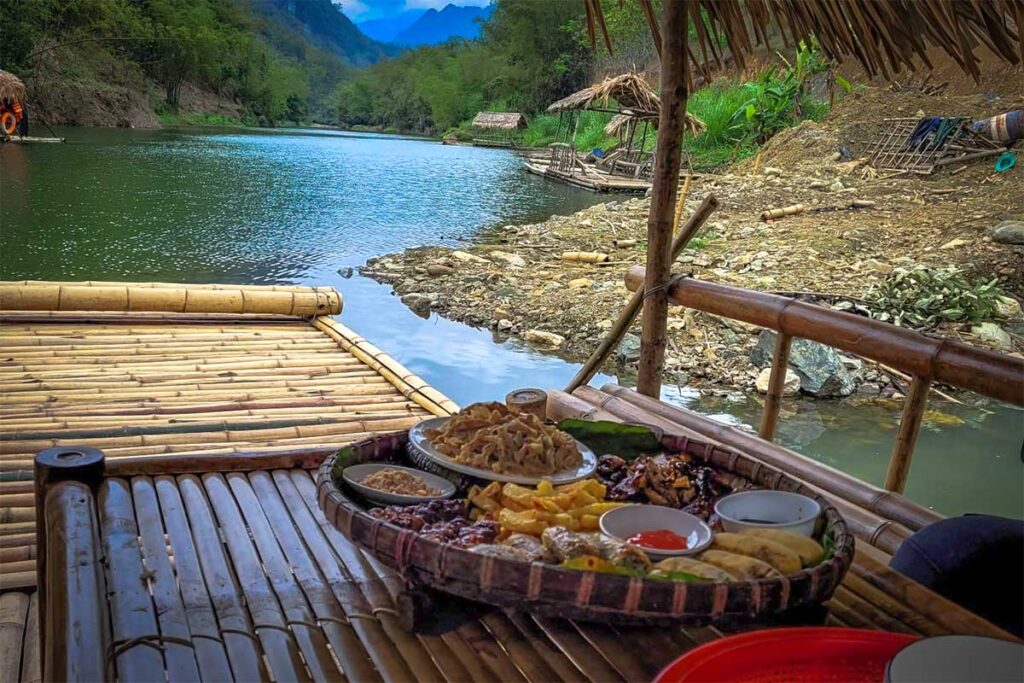
Best time to go bamboo rafting in Pu Luong
Best time of year
Bamboo rafting on Cham Stream is possible year-round, but some seasons offer a better experience than others.
- Spring (March–April): A great time to visit — the weather is warm and comfortable, and the rice terraces are starting to turn green.
- Summer (May–July): Hot and more prone to sudden downpours. The stream is fuller, making it a good time for a swim, but heavy rain can occasionally disrupt rafting.
- Autumn (September–October): Ideal conditions — clear skies, less rain, and golden rice fields in early autumn. One of the best times to visit overall.
- Winter (November–February): Dry and cooler. Rafting is still possible, but it’s not the best season for swimming. Early mornings can be chilly.
Best time of day
The best time to go is late morning or early afternoon, when the light is good and the temperature is pleasant. In summer, it’s best to avoid midday due to the intense heat. For photography, late afternoon offers softer light and can be especially nice if you want shots of the water wheels or reflections in the stream.
What to Bring
Cash
There are no card machines or formal ticketing at the rafting site, so bring cash — ideally in small bills (VND 20,000–50,000). Also note that there are no ATMs in Pu Luong, so it’s best to prepare all your cash needs before leaving Hanoi.
Sun protection
While some parts of the stream are shaded by trees, you’ll still be exposed to direct sun — especially on the raft. Bring sunscreen, a hat, and sunglasses. Light long sleeves can also help protect you from sunburn and glare.
Insect repellent
Mosquitoes can be active around the stream, especially in the late afternoon. A quick spray of repellent goes a long way.
Swimwear
If you’re planning to take a dip, pack swimwear and a fast-drying towel. The stream is generally shallow and calm, but some areas have rocks — water shoes can make getting in and out more comfortable.
Camera or phone with waterproof bag
It’s a scenic ride and worth photographing, but you’re on a bamboo raft and things can get wet. Use a waterproof case or dry bag to protect your phone or camera from splashes.
Other sights nearby the rafting
Chieng Lau Village
The bamboo rafting starts in Chieng Lau, a small and quiet hamlet. There’s not much to explore beyond the stream itself, but it has a peaceful rural atmosphere. You can take a short walk through the village to see stilt houses and daily life.
Combine with trekking
Many popular treks in Pu Luong start near this area or pass through nearby villages. It’s easy to combine a short rafting trip with a guided walk through rice terraces, bamboo forests, or ethnic minority villages. Ask your lodge or guide about available routes.
Hieu Waterfall
About 30 to 40 minutes away by motorbike, Hieu Waterfall is one of the most scenic spots in Pu Luong. The water flows year-round and is great for cooling off, especially during the hotter months. It’s also surrounded by small villages, rice terraces, and forest.
Pho Doan Market
Held every Thursday and Sunday morning, Pho Doan Market is the main traditional market in the area. It attracts Thai and Muong ethnic groups from nearby villages and is a good place to experience local culture and pick up regional products.
Full Pu Luong experience
Bamboo rafting is just one of many activities in Pu Luong. For more ideas on what to do — from trekking routes and waterfalls to caves, villages, and viewpoints — check out our full Pu Luong travel guide.
